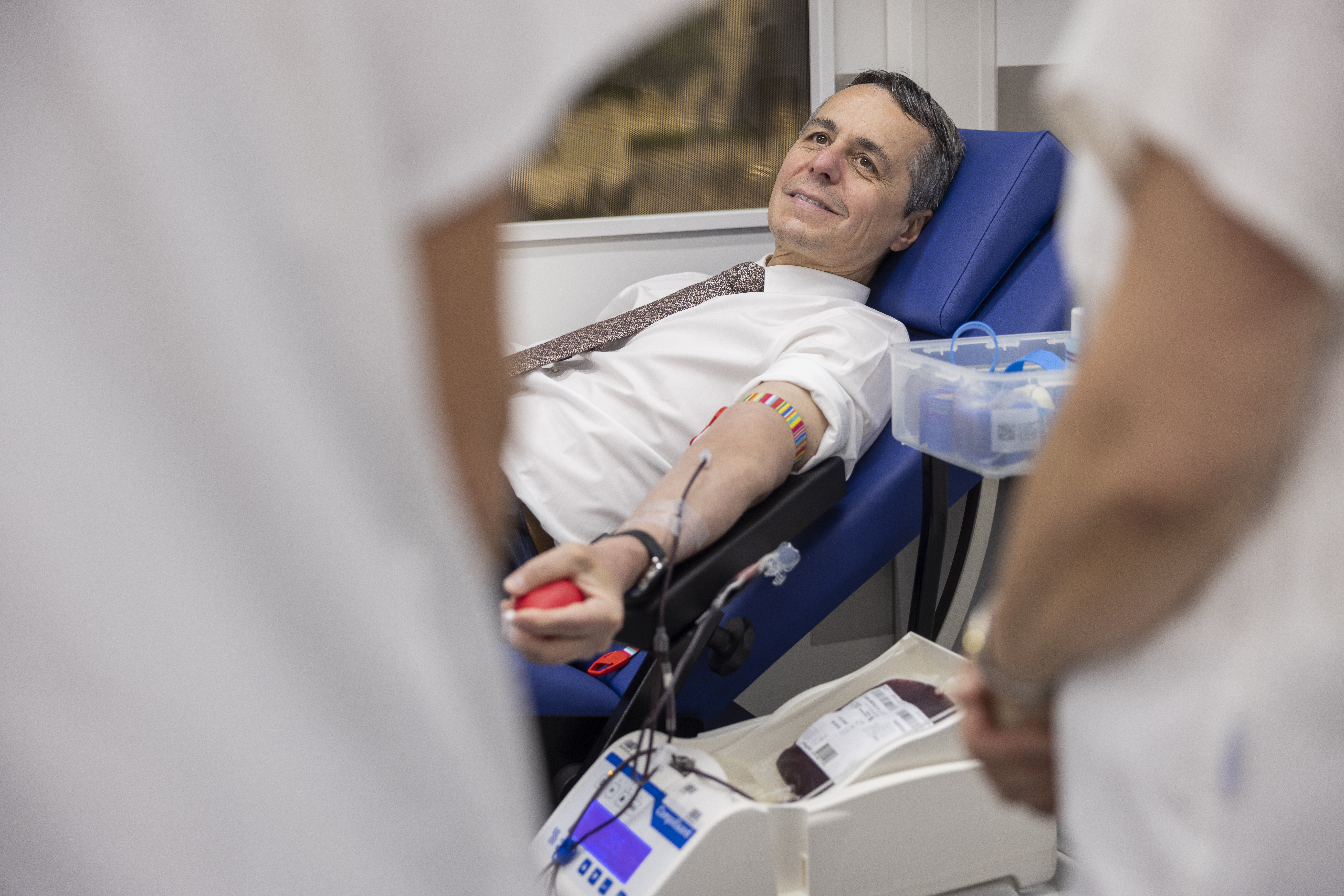Blood transfusion services face challenges during the pandemic
2021 was another year in the shadow of the pandemic, whose consequences changed the way we live together in our society. The eleven regional blood transfusion services were called upon to adapt flexibly to changing rules and regulations.
Due to the ban on gatherings, decisions taken at the national level resulted in uncertainty at the local level about whether blood drives could take place – on the part of local authorities and that of the groups that help run these events. Some drives had to be cancelled, usually because the safety requirements could not be fully met at the premises available. Moreover, blood drives at companies and universities did not take place due to a lack of sufficient potential donors, resulting from the obligation to allow employees to work from home and remote learning for students. Legal provisions banning gatherings always made an exception for blood donation in order to safeguard the blood supply.
The health and safety measures prescribed by the Federal Office of Public Health were implemented throughout the entire year. In addition, several of the regional blood transfusion services were able to stagger the arrival of blood donors, thanks to the digital appointment booking system, and thus ensure that distancing rules could be observed.
The vaccination campaign began in March. In August, Swiss Transfusion SRC introduced an online «vaccine-check» tool aimed at clearing up donors’ uncertainty about whether and how soon a person could donate blood after receiving a Covid-19 vaccine. With the tool, blood donors were able to find out online how long they needed to wait after receiving a vaccination before donating blood. This spared donors unnecessary trips and eased the workload at the regional transfusion services.
Donating blood was possible at all times since blood donation centres and blood drives were exempt from the «3G rule», and thus no one was required to show a certificate proving that they had been vaccinated, recovered or tested negative.
Despite the many challenges, it was possible to secure the blood supply in Switzerland throughout the entire year.


